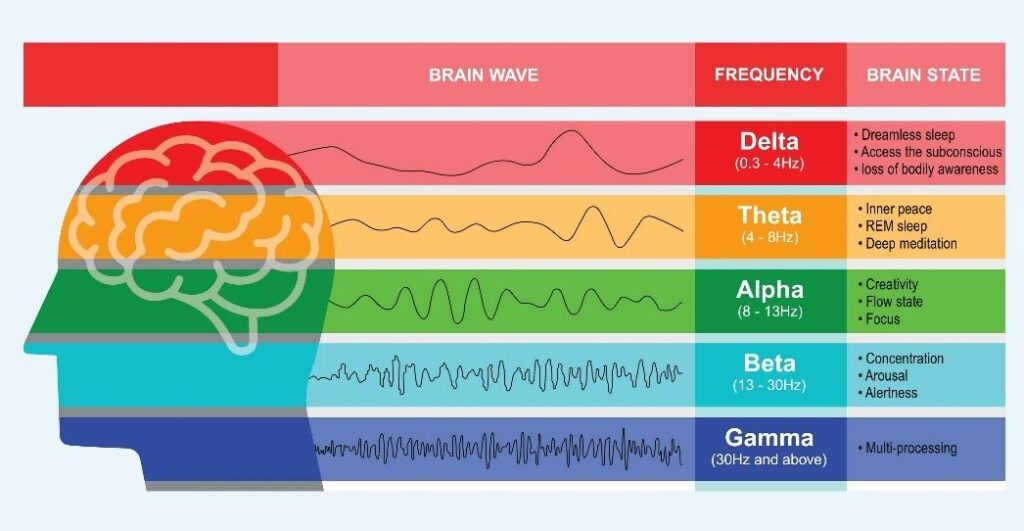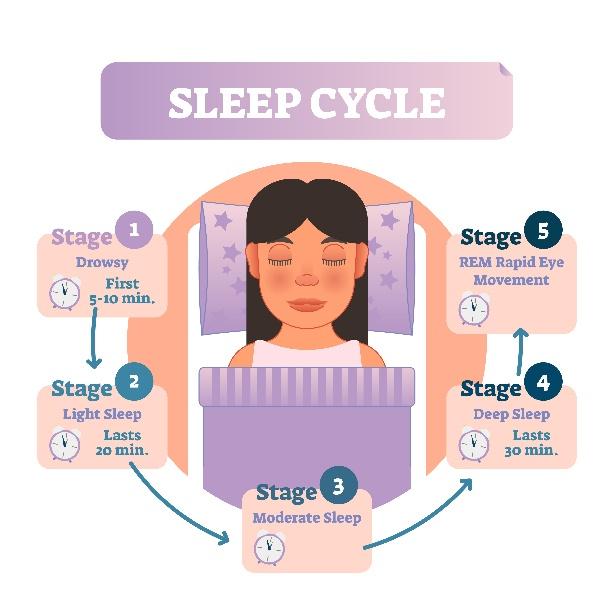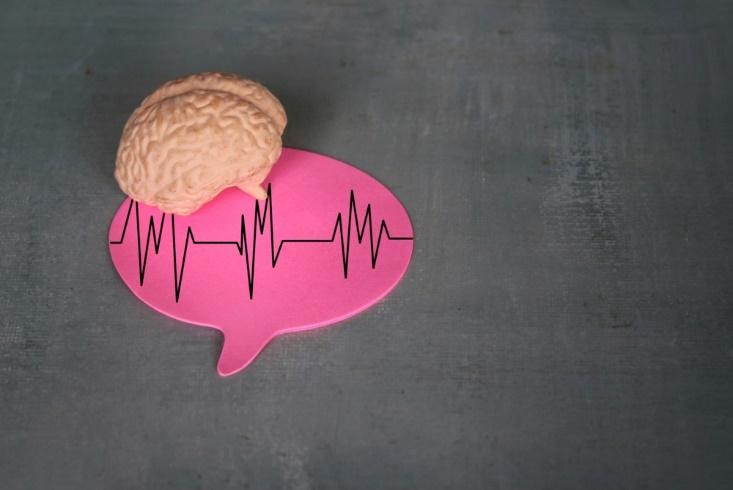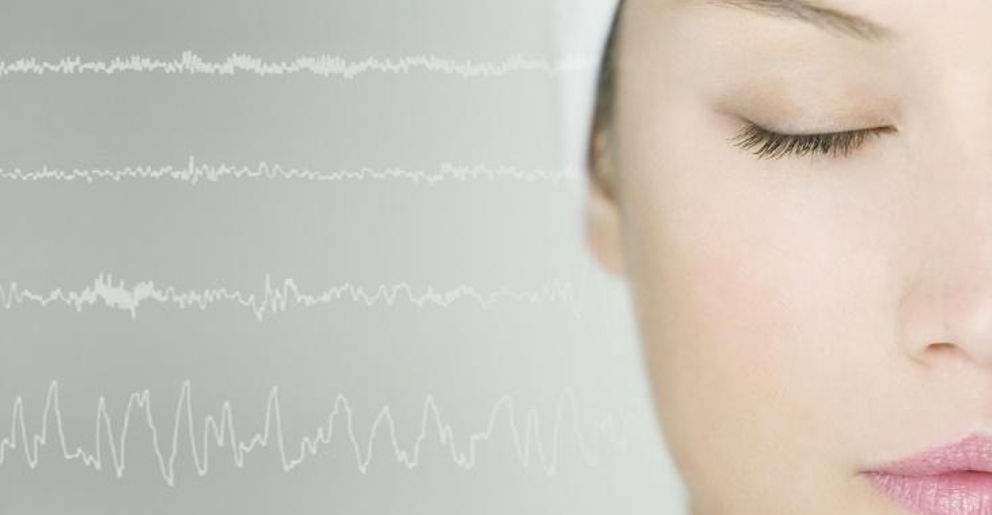If you live a healthy lifestyle, half of your time is spent sleeping. Experts recommend that you get at least 7 hours of sleep for optimal health and wellness. Ongoing sleep deprivation leads to reduced mental capacity, mood swings, metabolic disturbances, and early mortality.
One way to improve your sleep is to look at the different brain waves associated with sleep and see how they cycle throughout the night. This knowledge can help you strategize ways to improve your sleep habits so you can consistently optimize your sleep.
Understanding Sleep Cycles
Your nightly sleep is far more than “going unconscious” for a period of time. Your brain actually goes through many cycles consisting of various stages of sleep.
If you’ve watched someone sleep, you know that sometimes they sleep solidly and don’t move much. Other times, you’ll notice eye fluttering or small muscle movements that appear random. These differences have been scientifically labeled into two broad categories of stages:
- REM (Rapid Eye Movement) Sleep – This is when you do most of your dreaming. The rapid eye movements are random and appear to be “alert” during the dream; however, your muscles are effectively paralyzed, so you don’t act out the dream sequence.
- NREM (Non-Rapid Eye Movement) Sleep – This is not a single sleep stage but represents a range from drowsiness to the deepest stages of sleep. It is subdivided into three levels labeled N1 to N3, with N3 being the deepest sleep stage.
If you can imagine sleep as a rollercoaster that begins at the top with feeling drowsy. As you sleep throughout the night, you descend into deeper sleep stages before riding the wave back up to nearly the top.
It’s then that you have an episode of dream (REM) sleep before repeating another cycle. Each cycle lasts about 90 minutes from peak to peak. No two sleep cycles are the same during the night.
Your first few sleep cycles are deeper than the last, so you will be more likely to awaken briefly, even if you don’t remember it, later in the night. You are also more likely to dream later in the night than earlier. This helps you prioritize deep sleep when your sleep is cut short for any reason.
For optimal health and wellness, you need all sleep stages. NREM sleep, particularly the deepest stage (N3 sleep), is essential for life because it activates the system of drainage in the brain responsible for ridding the brain of metabolic waste during sleep. REM sleep has many functions. Without REM, your mental health will suffer over time.
Because REM sleep is not absolutely essential for human survival, sleep cycles prioritize deep NREM sleep before getting REM sleep during the last half of the sleep night.
Brain Waves: The Foundation of Sleep Waves
The sleep stages are not randomly determined, nor are they chosen only because a person has rapid eye movements (or not) during the various stages. They get their names because of the types of brain waves found in each stage.
Brain cells called neurons are electrical cells that give off specific electrical patterns termed “brain waves.” When doctors look at brain waves, they are studying the particular patterns of electrical signals given off by a collection of neurons.
Brain waves cannot tell what you’re thinking, but they can indicate the activity of the brain at specific times of the night and day. They can show if a person has seizures or how active or calm the brain is at any time.
Distinctive brain waves are given names describing various levels of brain activity:
- Gamma waves – These are the fastest brain waves, often linked to creative insight, multi-processing of various senses, and other higher-order thinking. Loss of these waves is sometimes linked to cognitive decline.
- Beta waves – These are associated with wakefulness, concentration, and arousal. Excesses of these waves are sometimes seen in anxiety states, PTSD, and amphetamine use.
- Alpha waves – These are somewhat slower than beta waves. They are seen when we are awake but relaxed or creative. Visualization is enhanced when we relax in this state.
- Theta waves – These are slower waves seen when we are slipping into sleep. They can also be seen when we meditate or sometimes during dreaming. The brain is metabolically slowing down when we’re in this state.
- Delta waves – These are the slowest brain waves. The deepest sleep occurs with these brain waves active, indicating low metabolic activity. This is when the brain waste removal system is activated. These might also be seen in coma states.

As you’ll see, the different sleep stages are linked to certain brainwave patterns. Your sleep stages begin with theta waves (slipping into sleep) and then progress to slower and slower delta wave patterns and back up toward lighter sleep before repeating the pattern.

Healthy sleep includes all of the stages in cycles of 90 minutes each. NREM sleep is needed for optimal sleep quality. You also need this type of sleep for total body repair and to have a sense of restful sleep.
Without N3 (deep, slow wave) sleep, for example, you would wake up but not feel particularly refreshed. REM sleep is not as essential for life as NREM sleep, but it helps reduce anxiety and regulate mood.
When you dream about things that are particularly frightening or challenging, for example, it is like a “practice run” for similar situations in real life. It allows you to face the worst possible scenarios during the night, helping reduce anxiety when coping with similar everyday symptoms.
The Sleep Wave Connection
Sleep waves involve predominantly theta and delta waves. The exception is when you dream. In the dream state, there is no difference between brain activity when you are awake and when you dream. The only difference is that you don’t act out your dreams because of muscle paralysis.
The different sleep stages can be defined by the brain activity seen:
The predominant brain waves in sleep are theta and delta waves. Delta waves are seen in the deepest sleep stages. Each sleep state is characterized by specific patterns of brain wave activity.
Wakefulness
This is when we see beta waves and/or alpha waves. Beta waves predominate when the eyes are open, while alpha waves predominate during early drowsiness or relaxation.
N1 NREM Sleep
Ideally, 5% of total sleep is spent in this stage. We are in light sleep and have just drifted off, even though we have some muscle tone and nearly normal breathing rates.
N2 NREM Sleep
This represents 45% of total sleep. It is deeper than N1 sleep and involves a drop in body temperature and heart rate. There are characteristic sleep spindles and sometimes K complexes.
Sleep spindles are brief bursts of electricity that may involve memory consolidations. K complexes are linked to emotional memory consolidation as well. These K complexes are delta ways lasting just one second; they also help maintain the sleep state.
N3 NREM Sleep
About 25% of sleep is in this state. Delta waves are very slow and have low amplitude. We are deeply asleep and, if awakened, would feel like we were in a mental fog. The body repairs itself as the brain flushes metabolic wastes. It is when some people have night terrors, sleepwalking, or bedwetting.
REM Sleep
In this stage, you would see beta waves very similar to being awake. The muscles of the body are paralyzed in this state (except for the breathing muscles).
It begins about 90 minutes after falling asleep. REM stages lengthen as the night progresses. Nightmares and dreams are prominent in this stage. Ideally, 25% of sleep occurs in this stage.
Researchers are studying sleep in ways that account for the different brain wave activity going on during sleep. When studying memory, for example, studies have found that all sleep stages are needed to consolidate the different memory types.
Declarative memory (such as remembering facts) is consolidated in stage N2 sleep and is linked to sleep spindles. If you were studying for a test and wanted to remember the facts, sleeping afterward enhances your ability to know them for the exam. Sleep spindles help connect your short-term memories to long-term storage areas.
K complexes also help with memory consolidation but appear to help with emotional memory. You are better able to put your visual memories together with emotional ones when K complexes work with sleep spindles.
If you want to master a golf swing or the perfect baseball pitch, your REM sleep can help. Research indicates that these procedural memories (muscle memories) are best consolidated when your sleep is long enough to allow for plenty of REM sleep.
Monitoring Sleep Waves

Brainwaves can be measured easily during sleep by using one of two methods:
Electroencephalogram (EEG)
This is a brainwave test that picks up the brain’s electrical activity through the skull. Multiple tiny electrodes are attached to the scalp.
Electrical activity all over the cranium is measured over time, showing the types of activity seen in the various parts of the central nervous system. It is often used to detect seizure activity, but it can be used to see the brainwave activity during sleep.
Polysomnography (PSG)
This is a nocturnal (nighttime) test that looks at multiple measures of sleep. If you have PSG in a hospital, an EEG is attached to study brain waves during sleep. You can also have things like blood pressure, oxygen, and heart rate while sleeping. It is used to diagnose various sleep disorders.
A modified “sleep study” can be done at home without the EEG component; however, it will not directly study brainwaves and will infer the sleep stages from the other information collected (heart rate, breathing, and oxygenation).
When sleep waves are studied using EEG tracing, doctors can look at the total number of sleep hours and much more. They can detect the different sleep stages and ensure you are getting the right amount of NREM and REM sleep.
If you have sleep-related disorders like sleep apnea or daytime sleepiness, a sleep study can see what’s happening by directly examining your brainwaves while sleeping. This is the first step toward finding solutions unique to your sleep issues.
Technology has advanced beyond laboratory EEG testing, which is expensive and often hard to obtain in some parts of the world. You can now do sleep studies at home without having your brainwaves studied directly. These studies are based on what we know about body movement, breathing, and heart rate during the various sleep stages.
You can also buy commercial devices you wear at night that look at your brainwaves with only a few electrodes (instead of the many used in a laboratory).
You can use these devices to enhance meditation or to study your own sleep in a familiar environment every night. By looking at your own sleep through brainwave analysis, you can make concrete changes in your lifestyle and study the effects.
Sleep Disorders and Sleep Waves
Many sleep disorders can be detected using polysomnography. The most common sleep disorders include the following:
- Sleep apnea – This involves stopping breathing during sleep, often leading to waking up gasping or having subclinical arousal that leads to a lack of restful sleep. Most people with sleep apnea have transient collapse of their oral airway that blocks the intake of air.
- REM Sleep Behavior Disorder – This involves literally acting out your dreams. It can be dangerous to your sleep partners (or you) and often predates other neurological disorders.
- Insomnia – This is incredibly common but involves difficulty going to sleep or staying asleep. The causes of insomnia are many and can include depression, anxiety, or chronic illness.
- Circadian Rhythm Disorders – These include common jet lag but also can involve consistently awakening too early or too late.
- Nightmare disorder – This involves having numerous disturbing nightmares that may or may not be linked to past trauma in your life.
- Sleepwalking – Sleepwalking involves literally walking around or doing things during sleep that you would have no memory of later.
- Narcolepsy – This involves attacks of falling asleep (cataplexy) suddenly, even while awake and alert. You could have excessive daytime sleepiness as well.
Many sleep issues present with excessive daytime sleepiness, which makes it important to study the brainwaves using polysomnography to identify the underlying problem.
Let’s look at how studying sleep waves can help identify sleep disorders in a couple of case studies:
Case 1: A woman aged 61 with a recent history of poor memory underwent a sleep study as part of a routine evaluation. The study revealed a distinct lack of N3 (restorative) sleep with no other abnormalities.
The woman was identified as likely having early-onset dementia exacerbated by a lack of the kind of sleep needed to flush metabolic waste from the brain. By optimizing sleep using enhanced nutrition, hydration, and exercise, she was able to increase her deep sleep levels, slowing the progress of her cognitive decline.
Case 2: A 45-year-old overweight trucker was having difficulty staying awake on the job. He said he was also falling asleep within a few minutes of sitting down to watch TV.
A sleep study showed he had episodes of frequent subclinical awakening along with apneic periods in which he was not adequately breathing. His sleep-related apnea was causing a lack of restorative sleep and frequent daytime sleepiness.
Sleep studies like these can use brain wave testing to look at your sleep waves. If there is a variation between your sleep stages and what is optimal, therapies can be used to optimize sleep and improve both daytime and nighttime symptoms.
The Future of Sleep Wave Research
The first EEG tracings were identified in 1924 by a German psychiatrist, Hans Berger. In the span of a century, researchers have not only used this type of testing to study epilepsy but have broadened its application to study minute details of human sleep.
The future of sleep wave research currently involves making sleep brain wave detection portable enough for each of us to use at home if needed to evaluate all types of sleep-related issues. The technology can be combined with cell phone apps and smartwatches to help individuals optimize their sleep throughout life.
Rather than going to sleep in an unfamiliar place (hospital or sleep lab), you will be able to do your own studies at home with greater accuracy because you are mimicking your real-life sleep situations. You would also be able to do this continuously if you need to change things in your daily life to see their effect on your sleep.
Sleep is an incredibly unique experience. We still don’t entirely know the impact of certain foods, environmental exposures, neurological disorders, and mental health on each person’s sleep.
We don’t yet know how they work together (or occasionally don’t) to impact sleep. Once we can put these things together in everyday situations and put the capabilities to study sleep in everyone’s hands, some of these questions can more easily be answered.
Conclusion
Brainwaves are a natural part of the electrical nature of the neurons in our brain. They vary with our level of alertness and with the different sleep stages. There are unique patterns of brain activity identifying the parts of sleep, ranging from drowsiness to deep, restorative sleep.
Each aspect of sleep is necessary for optimal physical and mental health. By studying brainwaves, doctors can identify a myriad of sleep disorders. Once identified, treatments can be properly directed to help you sleep better.
In the near future, this technology will be more portable and affordable so that you can study your own sleep and identify solutions that work for you.

